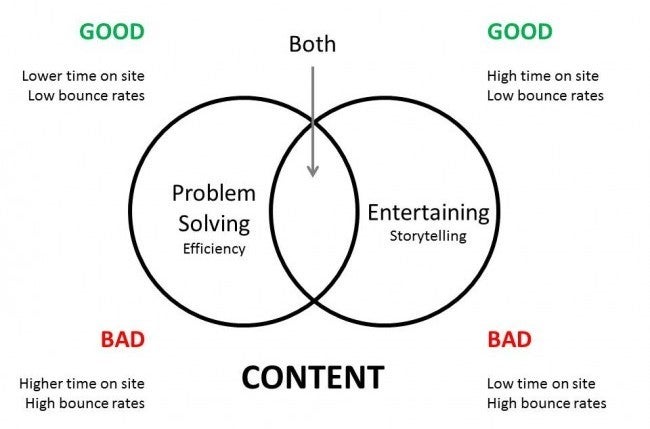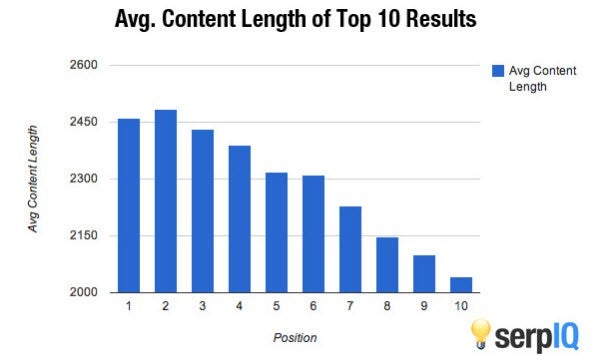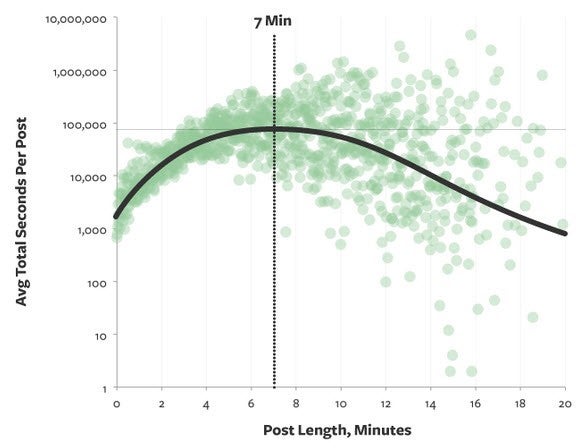Questioning the Conventional Wisdom of Storytelling and User Experience
By: Chad Pollitt

As a follow-up to last month’s “SEO And Content Marketing Thought Leadership Is Diverging Again,” I wanted to take a deeper dive into the value of known “friction indicators,” like time on site and bounce rates, while calling into question the conventional wisdom of what makes a good user experience.
Ask almost any SEO, or digital marketer in general for that matter, what they want to see in their bounce rates and time on site and you’ll most likely be told:
- High time on site
- Low bounce rates
Makes sense, right? If people stay on your website for a long time they must like it. If they don’t bounce right away on any subsequent page view they must like it. Therefore, search engines should be much more likely to reward those attributes in their results pages, right?
That’s what conventional wisdom tells us, but I have to question this common way of thinking because not all content is consumed with the same intent.
Problem Solving and Entertaining Content
My friend and author Jim Kukral, who’s been doing digital marketing long before I started, once said that “people only go to the web for two reasons: to solve a problem or be entertained.” Late last decade I adjusted it slightly for my own use:
People only go to the web for two reasons—to be entertained or solve a problem, quickly.
Think about it. The Internet really only provides for those two things in its entirety. No matter what you come up with, it’s bound to fit in one of those two buckets.
My addition of the word “quickly” to “solve a problem” was quite purposeful. People these days are in a hurry and they want to find the best answer to their problems quickly. Few would question this logic.
Google follows this logic, too. Just look at its Instant Answers, Knowledge Graph and its Autocomplete feature. These are just a few, but there’s many more examples of the search engine giant using this logic.
All of these features deliver users solutions to their queries faster and, in some situations, it’s so fast they don’t even have to click on anything.
Problem Solving Content
All businesses are in the business of solving peoples’ problems—that’s what they do and why they exist. Whether B2B or B2C—at their core, businesses solve problems. Therefore, based on the logic Google uses in some of its own features, the best problem solving content that can be consumed the fastest is most valuable and worthy of ranking the highest.
As a result, why do we continue to believe that high time on site is an ideal metric for search engine algorithms? What if a web page, like a forum, has the answer you’re seeking, but it’s buried deep in a thread and takes you forever to find it?
Since the time on site is higher for that forum does it make it more worthy to rank than another web page that has the answer right there, front and center? It’s inherently less useful, so therefore, no, it’s not more worthy.
What if a website is so good at answering questions people are able to bounce (due to having the answer they sought) within seconds of landing there? Does that make it less worthy to rank? No, quite the opposite. This example is a little far-fetched, but you get the point.
When you juxtapose this logic with the forthcoming storytelling logic you get the conundrum depicted in the graphic below.
Entertaining Content
Generally speaking, entertaining web content or destinations are indeed looking for visitors to stick around for a while. Take Facebook for example. Ultimately, Facebook wants to keep its users on its site exclusively for as long as possible and doesn’t want them clicking out. That’s why they developed Instant Articles and in-feed video playback. YouTube is the same way.
Other sites with entertainment or storytelling at its core are searching for much of the same—becoming a destination that visitors don’t want to leave because they’re so entertained. In essence, logic tells us that the user experience expectations of visitors for problem solving content and entertaining content are naturally and diametrically opposed to one another.
Where It Really Starts to Get Muddy
This becomes particularly difficult to logically reconcile when brands are taking up the concept of “storytelling” as part and parcel for content marketing campaigns. These are businesses that are in the business of solving peoples’ problems. They are not generally considered entertainment companies.
While storytelling can be problem solving, it’s likely to appear more like the long forum thread described above that has the answer buried in it. Is this the kind of content Google wishes to reward? The logic behind some of its search engine features point to no.
On the other hand, a certain percentage of people like to be entertained through storytelling AND solve a problem at the same time. If Google swings too hard in one direction or the other it could undoubtedly alienate a certain percentage of search users.
According to this article by WordStream, “What is Long-Form Content and Why Does it Work,” longer content performs better, on average, than shorter content. This seems to fly in the face of the logic behind the search engine features noted above. Not everyone is looking to traverse massive articles to find the answers they seek.
The study by serpIQ above was done in late 2011 or early 2012 and doesn’t share detail of the data sets used to come to these conclusions. It further reports that as the age of the domain increases, the content length of high performing pages decreases. I’m not questioning the validity of their study. However, I am saying that given the speed of search engine algorithm updates and changes this data might not be good anymore.
Related Article: Optimize Your Mobile Website to Boost Conversions
Another study conducted by Medium shows that its most successful articles take seven minutes to read and are around 1,600 words in length.
This is good information to know for content marketers. However, Medium is in the entertaining and problem solving business. Besides, this study doesn’t speak to search volume to these articles. Does this mean all content marketers should use storytelling and create long form content?
No, it doesn’t because many brands aren’t in the storytelling business—they’re in the problem solving business. And many website visitors want quick and to-the-point solutions to their problems.
Conclusions
It is indeed possible that longer form content with low bounce rates and high time on site perform the best with search engines. However, low bounce rates and high time on site aren’t necessarily the reason why. It could very well be due to the number of naturally occurring link citations to longer form content.
I’ve yet to see a study to prove this theory, but I would bet naturally occurring link citations diminish as content length decreases. The fact is Google is showing us clearly that it sees value in providing quick solutions to people’s problems so why would it go out of its way to reward the opposite?
It’s clear that more studies need to be done around this topic to truly test today’s conventional wisdom. A positive user experience isn’t always correlated with high time on site and low bounce rates.
In the meantime, provide your audience with the content they’ve grown to expect from your brand. It’s OK to experiment, but don’t just blindly accept that storytelling, low bounce rates and high time on site always equate to a good user experience.















